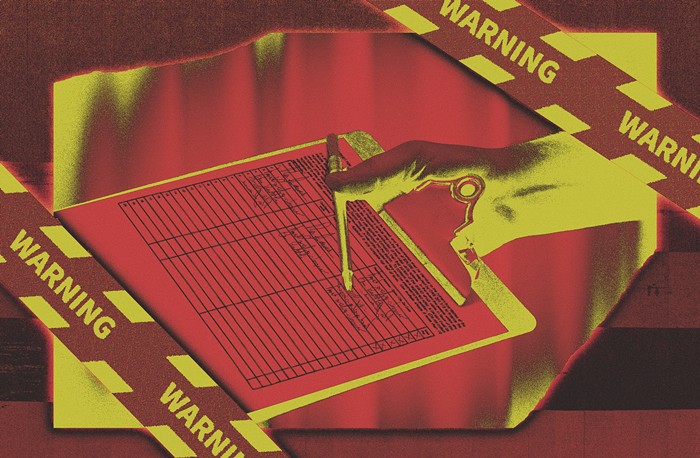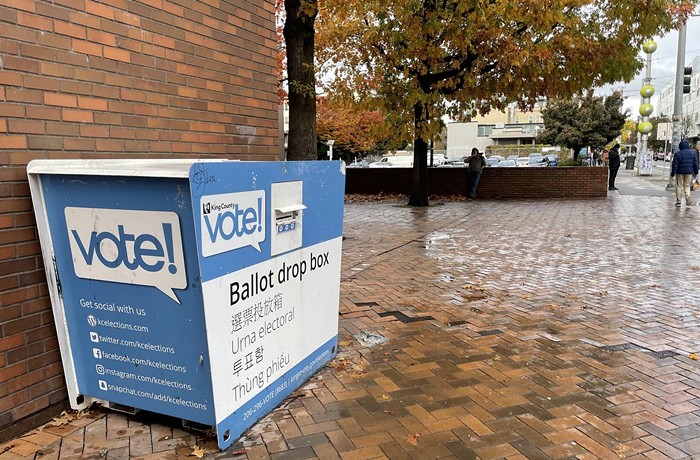In a recent post on the Seattle Post-Intelligencer's "Big Blog," P-I managing editor David McCumber had this to say about the P-I's seemingly imminent demise:
"I think that nationally and locally, we've been slow to respond to changes in the market, in readers' needs, and in technology. I think larger papers, like the P-I, gradually ossified by demanding years of experience for any opening and paid too little attention to diversifying, in terms of age, ethnicity, and gender, to better reflect the communities they serve. I think we haven't done a good job of marketing ourselves, of making sure people understand that what we do actually is valuable. I think we got trapped between serving the readers we wanted to attract and the readers we actually had. And we haven't done a very thorough job of continuing to research our readership and our potential readership."
As I see it, that assessment was only partly right. The P-I didn't diversify too little, it diversified too much—and in the wrong directions. In a desperate effort to make a dent online—an arena where its competitor, the Seattle Times, has faltered—the paper wasted acres of real estate in areas where the market is already saturated. Instead of creating a splashy webpage full of celebrity gossip and fashion photos, the P-I should have chosen one thing to really focus on (local politics, perhaps?) and owned it. Instead, it tried to be everything to everyone—and ended up being indispensable to no one.
If the P-I is going to continue as an online-only publication, it should capitalize on its strengths—local reporting, breaking news, insightful political commentary—and stop "diversifying" into areas where it will never measure up to the competition. A few examples:
• Too many blogs. On the P-I's main blog page, there are currently 26 blogs by P-I staff. Many overlap (are seven separate sports blogs really necessary? Should fly-fishing have made the cut?); many have names that tell me next to nothing about what the blog is about. (Would you guess that "Secret Ingredients" was about public health? Or "Royal Brougham's Baby" about baseball?) A few are called out on the main page (the Big Blog, SPI, and Strange Bedfellows), but it's not clear why—does the P-I consider these its best blogs, the most important, the most read? Or are they chosen more or less at random?
I'm not saying the Slog model (one or two blogs that cover a wide range of subjects with a wide range of voices) is the only one that works, but you do want to strike a balance between allowing readers to choose what they want to read about and overwhelming them with more options than they can possibly explore. The P-I would have been wise to limit itself to fewer general topics—say, sports, news, opinion, entertainment, and food—instead of giving every subset of every subject a little fiefdom of its own. That's what Blogspot and LiveJournal were made for.
• Too much democracy. If the staff blogs are an overcrowded marketplace of ideas, the reader blogs are a Super Wal-Mart, with something for every micro-interest. There's a blog on cakes and a blog on "fashion for moms," one on charitable giving and one on pet health. There are blogs for aviation geeks, people who are interested in "haute happenings on the Eastside," and those who want to "age gracefully." Many haven't been updated for months. They're an uncurated mishmash of smart commentary and useless drivel, with no way to tell between the two without clicking 100 links. If newspapers are going to let their readers blog (rather than relegating them to the comments), some hurdles (an audition, perhaps?) would improve the overall quality. Meanwhile, blogs that go dark for more than a few weeks should be shut down.
• Too much frivolity. The P-I's front page is stuffed with stuff. There's a roundup of photos from movie premieres; galleries for Fashion Week in Hong Kong AND the Fashion Rio show; a page of "First Lady Fashion"; a page full of "amazing animals"; a guide to TV listings; a gallery of readers' photos of their pets and another, below it, for photos of their kids; and so on. Unless the P-I's market research reveals something dramatically counter to my own experience, people aren't getting their news about Naomi Campbell's latest outburst or SamRo's latest breakup from daily-newspaper websites. And I can find cute animals and fashion on cute-animal and fashion websites. I don't need a 163-year-old daily paper to tell me about Michelle Obama's inauguration gown.
• Too much participation. At the P-I's website, after you've blogged about playgroups or the Ravenna bar scene or bulb gardening, you can go submit an essay about "What the Inauguration Means to Me," upload your photos to MySeattlePix, take part in a forum about being a Seattle mom, become Facebook friends (and go to meetups) with various P-I reporters, and "Sound Off" in the comments to any story. Combined with P-I bloggers insistence on starting "conversations" with their readers—e.g., "What do YOU think of the P-I's future?"—it all starts to look a little desperate. Instead of providing three-dozen different points of contact, the P-I should limit it to a few. I'm willing to bet more people would be interested in giving feedback if they didn't have to choose between commenting, joining a forum, "sounding off," and contributing an essay.
• "Irreverence" can't be forced. The P-I's "youth-oriented" blog, SPI, is produced by a horde of unpaid interns—as if handing the reins over to college-age "aspiring writers" automatically results in a product that's "younger," "hipper," and more "raw." If the daily papers learned anything from their disastrous experiments with back pages produced by and for young adults (remember the Seattle Times' awful back page, NEXT?), it's that "young" doesn't automatically mean "readable"—and that putting headlines in graffiti font doesn't fool kids into thinking daily newspapers are cool.
All of this isn't to slag on the things the P-I does well. As I wrote in last week's In the Hall column, I'll miss the paper's local news reporting, the attention it pays to low-profile events, the fact that, true to its name, it has been a paper about the city, not the suburbs. But if the paper does have a future online—and that's a big if—it will have to adapt to survive. Maybe that will mean that instead of being everything to everyone, the P-I will have to learn to do a few things well. ![]()


















